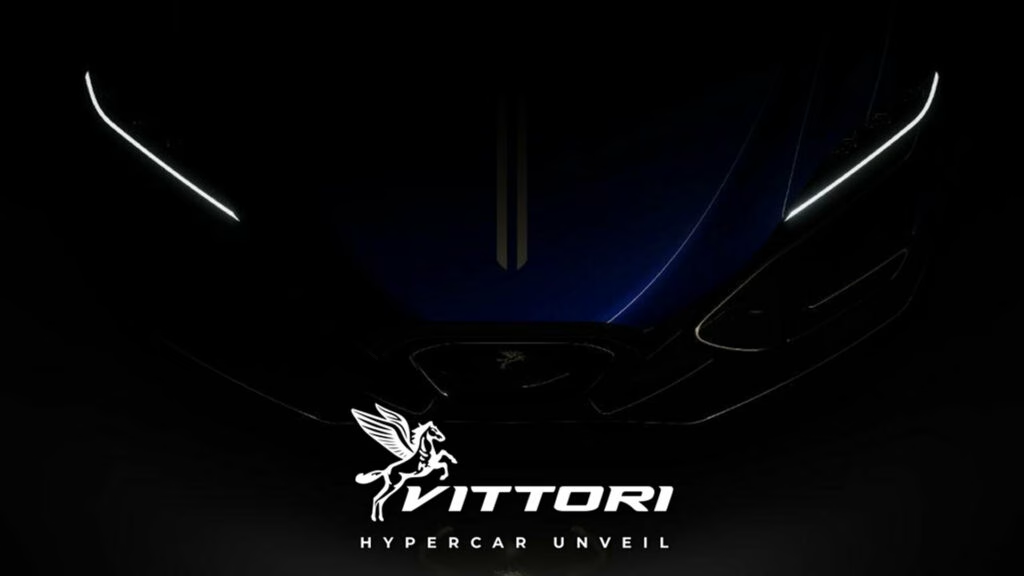What Makes the Vittori Turbio Stand Out in the Hypercar World?
When a new name enters the hypercar arena, it’s natural to wonder: what’s different this time? Vittori, a fresh face in the industry, is making its debut with the Turbio—a car that’s already turning heads before its official unveiling in Miami on October 4. The buzz isn’t just about the numbers (though they’re wild), but about the way this car blends old-school Italian design flair with bleeding-edge technology. And yes, there’s a dash of drama, too.
Is the Turbio Just a Reworked Lamborghini Revuelto?
Let’s address the elephant in the room. On paper, the Turbio’s dimensions and specs line up suspiciously close to the Lamborghini Revuelto. We’re talking identical length, wheelbase, dry weight, and even the 44/56 weight distribution. The powertrain? A 6.8-liter V12 paired with a 3.8 kWh lithium-ion battery and a front-mounted electric motor for a total of 1,110 hp. That’s a hair above the Revuelto’s numbers.
But here’s the twist: Vittori claims the Turbio is the product of a collaboration with Pininfarina, the legendary Italian design house. That’s a big deal—Pininfarina’s fingerprints are all over some of the world’s most iconic cars. So, while the bones might feel familiar, the skin and soul could be something else entirely.
How Does AI Change the Game for Hypercar Design?
Vittori isn’t shy about its use of artificial intelligence. The Turbio’s chassis and body panels are crafted using AI-powered 3D printing, and the company touts “AI-assisted design” as a core part of the process. That’s a bold move, and it’s not just marketing fluff. AI-driven design can optimize aerodynamics, reduce weight, and even predict how materials will behave under stress—things that would take human engineers weeks or months to model.
For example, McLaren and Bugatti have both started using generative design tools to shave grams and improve airflow in recent years. Vittori is pushing this trend further, promising a car that’s as much a product of algorithms as artistry. The result? Potentially, a machine that’s lighter, stiffer, and slipperier through the air than anything before it.
What’s the Story Behind the Turbio’s Wild Styling?
Take a glance at the teaser images and you’ll see a mash-up of influences: an Alfa Romeo’s sensual curves, Bugatti’s horseshoe grille, Lamborghini’s aggression. The Turbio sports an aggressive front fascia, slender lights, a double-bubble roof, and X-shaped taillights. There’s a massive rear diffuser and scoops that hint at serious cooling needs.
Some purists might grumble that it looks like a greatest-hits album of supercar design. But that’s missing the point. In the hypercar world, standing out matters—and the Turbio’s blend of familiar cues with futuristic touches (like active aerodynamics and AI-shaped surfaces) is designed to make you look twice. Maybe even three times.
How Fast Is It Really—and What’s Up With That Top Speed?
Vittori claims the Turbio will rocket from 0-60 mph in under 2.5 seconds. That’s right in the thick of today’s hypercar pack, rivaling the likes of the Ferrari SF90 Stradale and, of course, the Lamborghini Revuelto.
But there’s a hiccup: the company lists a top speed of “220 m/h,” which, if you take literally, is 0.14 mph. Clearly a typo. If they meant 220 km/h, that’s only 137 mph—oddly low for a car with over 1,100 horsepower. Most likely, the real number will be north of 220 mph, putting it in the same league as its rivals. Still, it’s a reminder that early teasers sometimes raise as many questions as they answer.
How Limited—and How Real—is the Turbio?
Vittori says only 50 units will be built, assuming the project makes it to production. That’s par for the course in the hypercar world, where exclusivity is as important as outright speed. But the company is also hedging its bets, noting that “production specifications may change and timing will be announced as development progresses.” Translation: this is a running concept, not a finished product.
Skepticism is healthy here. Many startups have promised the moon and delivered little more than vaporware. However, the involvement of Pininfarina and the use of advanced manufacturing techniques lend the Turbio a bit more credibility than your average upstart.
What Does the Turbio Mean for the Future of Hypercars?
The Turbio isn’t just another fast car. It’s a sign of where the industry is headed: a place where AI and human creativity collide, where 3D printing isn’t just for prototypes, and where even the most exclusive machines are shaped by algorithms. If Vittori pulls this off, it could set a new template for how hypercars are designed and built.
The big takeaway? Chasing hypercar greatness isn’t about perfection—it’s about smarter adjustments. Start with one change this week, and you’ll likely spot the difference by month’s end.

